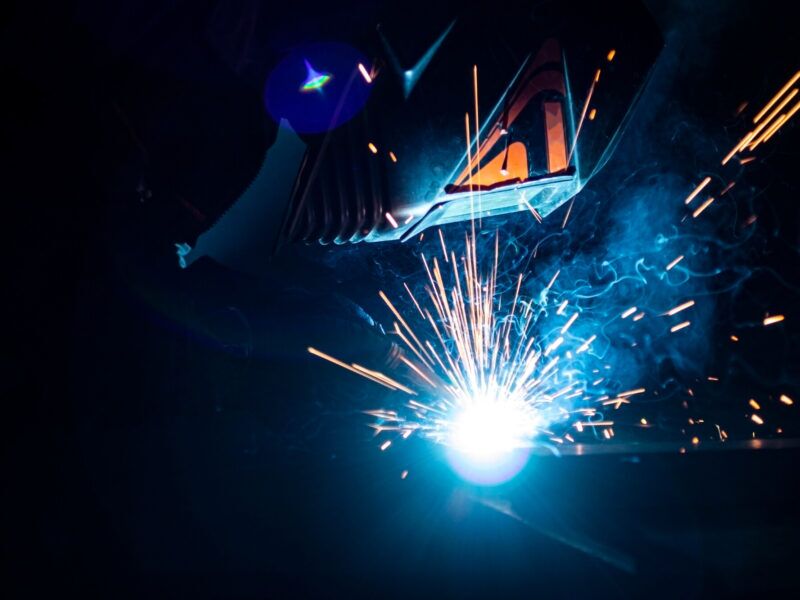Specialist Techniques for Preventing Weld Undercut Successfully
Specialist Techniques for Preventing Weld Undercut Successfully
Blog Article
Understanding the Art of Welding: How to Stay Clear Of Undercut Welding Issues for Flawless Construction Outcomes
Performance and accuracy are extremely important worldwide of welding, where also the least blemish can compromise the architectural integrity of a fabricated piece. One typical challenge that welders face is damaging, a flaw that can lead and damage a weld joint to pricey rework. By recognizing the origin of undercut welding and implementing effective methods to stop it, welders can boost their craft to brand-new degrees of excellence (Preventing weld undercut). In the pursuit of flawless manufacture outcomes, understanding the art of welding to prevent undercut concerns is not simply a skill but a necessity for those making every effort for excellence in their job.
Recognizing Undercut Welding

To avoid undercut welding, welders ought to ensure appropriate welding parameters, such as adjusting the existing, voltage, travel rate, and maintaining the right electrode angle. Furthermore, using the ideal welding technique for the certain joint configuration is essential. Using weaving motions or backstepping strategies can help make sure appropriate weld steel deposition and decrease the chance of undercut formation. Routine examination of welds throughout and after the welding process is also critical to catch any type of undercut very early and make required modifications to stop further flaws. Preventing weld undercut. By comprehending the sources of undercut welding and implementing safety nets, welders can attain premium, structurally audio welds.
Sources Of Undercut in Welding
Comprehending the elements that add to damage in welding is vital for welders to generate high-grade, structurally audio welds. Insufficient welding inaccurate or present welding rate can also contribute to undercut. Comprehending these reasons and executing appropriate welding strategies can aid prevent damaging problems, making certain resilient and strong welds.
Strategies to avoid Undercutting

To mitigate the danger of undercutting in welding, welders can use calculated welding methods aimed at enhancing the quality and integrity of the weld joints. In addition, using the proper her explanation welding method for the particular joint configuration, such as weave or stringer grains, can contribute to decreasing damaging.
Employing back-step welding methods and managing the weld bead profile can likewise assist disperse warmth equally and reduce the danger of undercut. Normal examination of the weld joint throughout and after welding, as well as carrying out high quality assurance steps, can help in dealing with and identifying damaging problems without delay.
Importance of Proper Welding Parameters
Selecting and maintaining suitable welding parameters is vital for accomplishing successful welds with very little defects. Welding parameters refer to variables such as voltage, existing, take a trip rate, electrode angle, and shielding gas flow rate that straight affect the welding process. These parameters must be carefully adjusted based upon the kind of material being bonded, its density, and the welding method utilized.
Proper welding criteria guarantee the correct amount of heat is put on melt the base steels and filler product consistently. If the parameters are established expensive, it can result in excessive warm input, triggering click now distortion, burn-through, or spatter. On the various other hand, if the specifications are too reduced, incomplete fusion, absence of penetration, or undercutting might happen.
Quality Guarantee in Welding Procedures

Verdict
In verdict, understanding the art of welding calls for a thorough understanding of undercut welding, its causes, and techniques to avoid it. By making certain correct welding criteria and carrying out quality control practices, perfect construction outcomes can be achieved. It is important for welders to consistently pursue quality in their welding procedures to avoid undercut issues and generate top notch welds.
Undercut welding, a typical flaw in welding processes, occurs when the weld steel doesn't properly load the groove and leaves a groove or anxiety along the welded joint.To protect against undercut welding, welders must guarantee correct welding specifications, such as adjusting the existing, voltage, travel rate, and maintaining the proper electrode angle. Insufficient welding inaccurate or existing welding speed can additionally contribute to undercut.To mitigate the danger of damaging in welding, welders can utilize critical welding methods aimed at boosting the high quality and honesty of the weld joints.In conclusion, grasping the art of welding requires a comprehensive understanding of undercut welding, its reasons, and techniques to avoid it.
Report this page